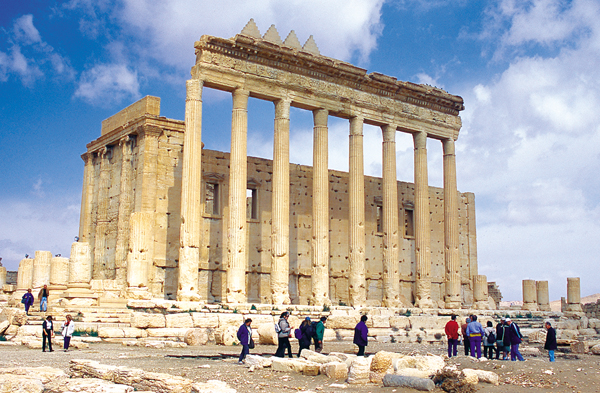Image Details

Richard Nowitz
A blending of styles. The partially reconstructed temple of Bel (Ba’al) at Palmyra, in Syria, displays a mixture of local and Roman architectural features, a combination found also in Herod’s rebuilding of the Second Temple in Jerusalem. The Bel temple, built in the first century C.E., incorporates such Roman features as columns with Corinthian capitals, a matching entablature—consisting of the architrave and decorative cornice—above the columns, and also the design of the temple’s doorway (not visible in the photo). There are also several local features, however, including the internal arrangement of the sanctuary: Whereas Romans typically set up their cult statues on pedestals in a niche, Semitic temples like the temple of Bel housed images of the deities in separate rooms or tabernacles. The interior space of Herod’s (and Solomon’s) Jerusalem Temple was likewise divided into a porch, sanctuary chamber and a smaller, separate Holy of Holies. There was, of course, no statue in Jerusalem Temple, but only cult vessels—including the gold lampstand (menorah) and table of showbread, which were housed in the sanctuary chamber while the Holy of Holies was left empty.
Another local feature of the Temple of Bel is the flat roof with crowstep merlons—the sawtooth feature that forms a parapet along the top. There is no archaeological evidence for a crowstep parapet crowning Herod’s sanctuary, although crowstep blocks have been found among the remains of the temple of Kore at Samaria, which appear to be of similar date. Such a parapet is included in some reconstructions of the Second Temple. The Mishnah, the earliest compendium of Jewish law and one of our prime sources on the Temple, describes a rim with sharp edges to keep birds from alighting and soiling the building; this feature may have formed part of a parapet (Middot 4:6).
